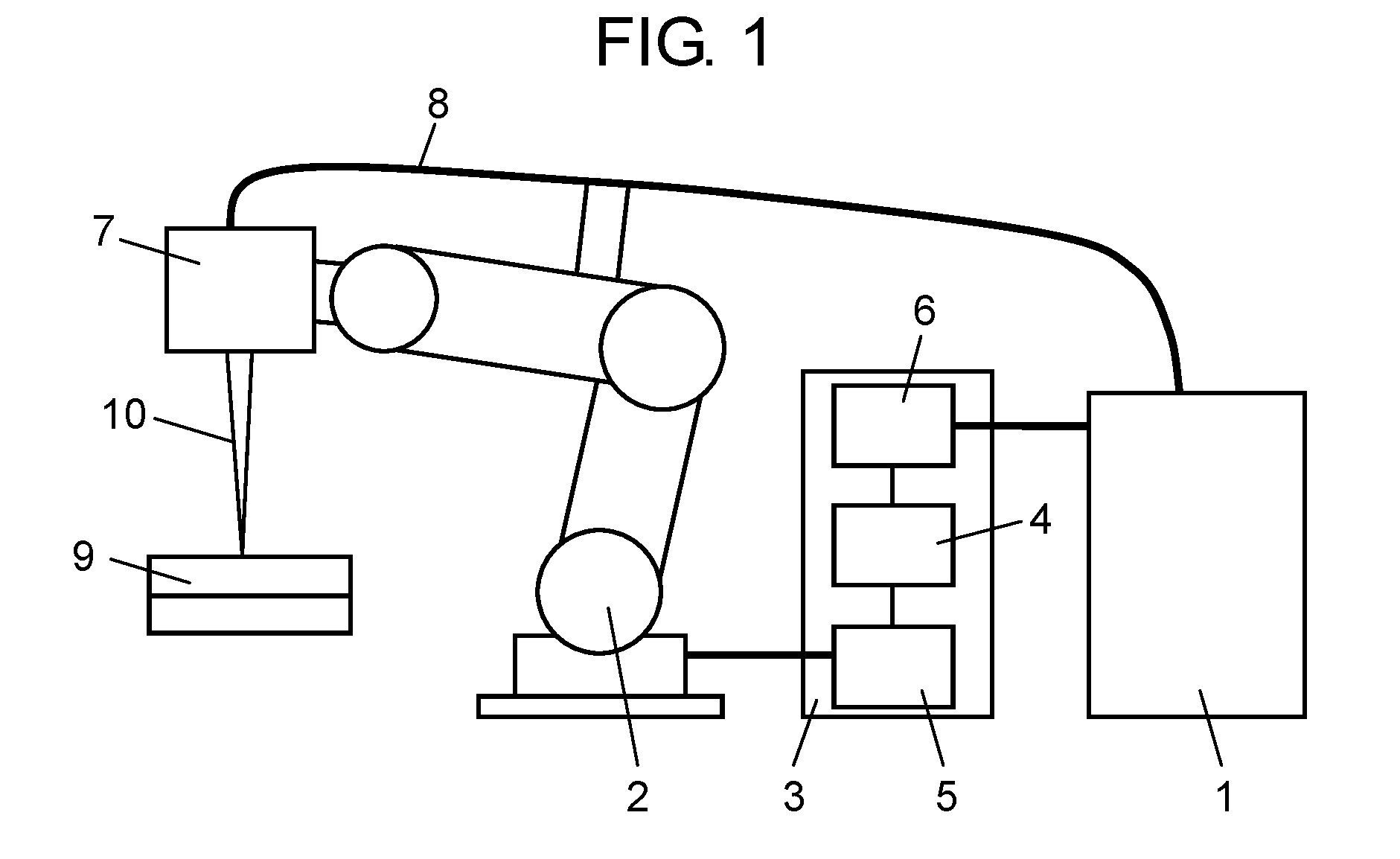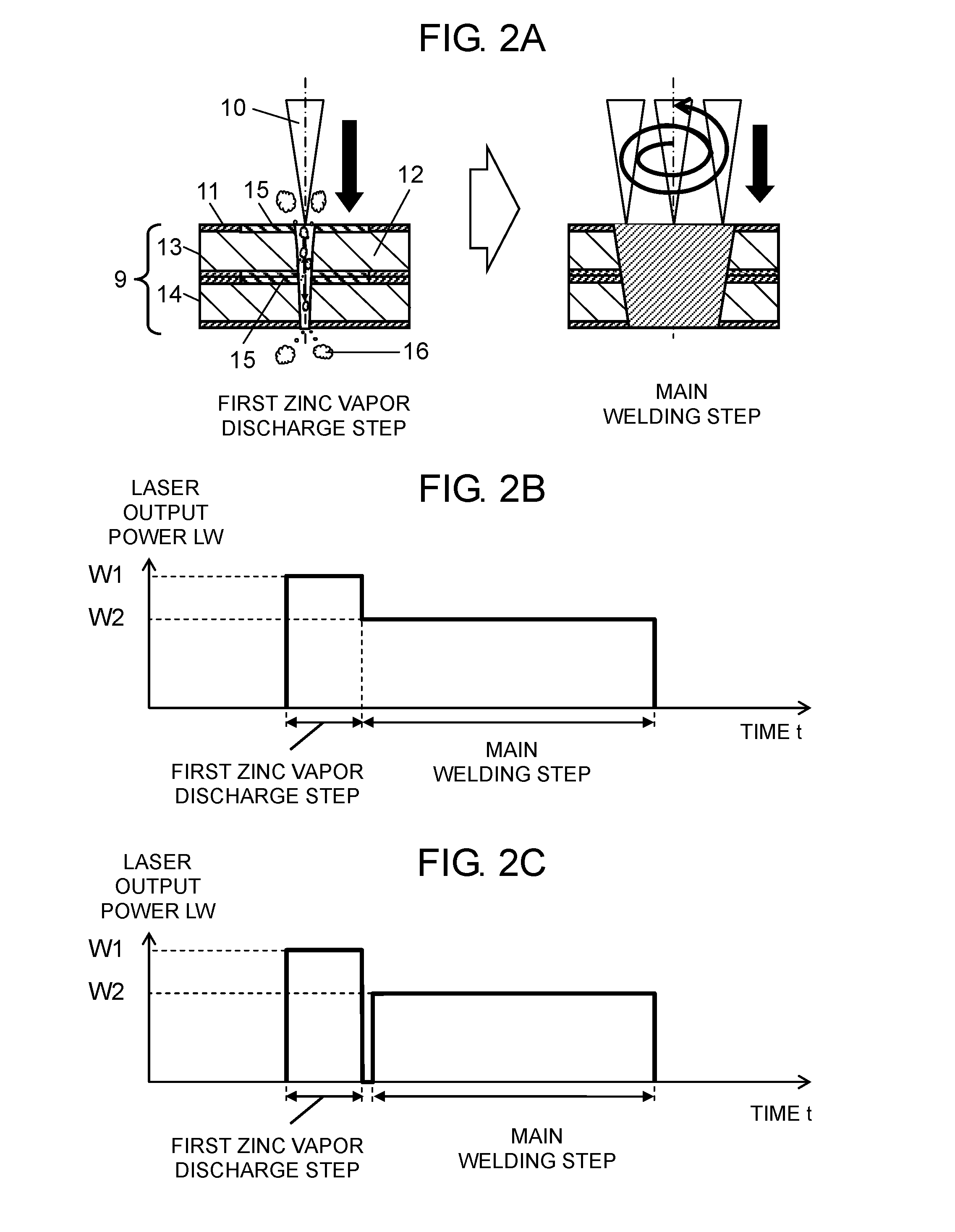Laser welding method and laser welding device
a laser welding and laser beam technology, applied in the field of laser welding, can solve the problems of limited heat transfer area and laser beam irradiation area, and achieve the effect of reducing pores and controlling pores
- Summary
- Abstract
- Description
- Claims
- Application Information
AI Technical Summary
Benefits of technology
Problems solved by technology
Method used
Image
Examples
first exemplary embodiment
[0031]A first exemplary embodiment will be described with reference to FIG. 1 to FIG. 2C. FIG. 1 illustrates a schematic configuration of a laser welding device in this exemplary embodiment. FIG. 2A illustrates steps of a laser welding method in this exemplary embodiment. FIG. 2B is a graph indicating laser output power in the laser welding method in this exemplary embodiment. FIG. 2C is a graph indicating laser output power in another laser welding method in this exemplary embodiment. In FIG. 2B and FIG. 2C, the horizontal axis represents a time t and the vertical axis represents laser output power LW.
[0032]As illustrated in FIG. 1, a laser welding device in this exemplary embodiment includes laser oscillator 1, robot 2, controller 3 (control unit), laser irradiation head 7 (laser head), and optical fiber 8.
[0033]Laser oscillator 1 is connected to controller 3 and to a first end of optical fiber 8. Laser oscillator 1 outputs a laser beam, and then the laser beam enters optical fibe...
second exemplary embodiment
[0046]A second exemplary embodiment will be described with reference to FIG. 3A to FIG. 5. FIG. 3A illustrates steps of a laser welding method in this exemplary embodiment. FIG. 3B is a graph indicating laser output power in the laser welding method in this exemplary embodiment. FIG. 3C is a graph indicating laser output power in another laser welding method in this exemplary embodiment. FIG. 4 illustrates an effect produced by a relationship between laser output power and a laser irradiation time in a first zinc vapor discharge step. FIG. 5 illustrates an effect produced by a relationship between laser output power and a number of revolutions of a spiral movement in a second zinc vapor discharge step.
[0047]A laser welding device in this exemplary embodiment will not be described, because this laser welding device is identical to the laser welding device in the first exemplary embodiment.
[0048]A laser welding method in this exemplary embodiment will be described with reference to FI...
PUM
| Property | Measurement | Unit |
|---|---|---|
| boiling point | aaaaa | aaaaa |
| melting point | aaaaa | aaaaa |
| circumference | aaaaa | aaaaa |
Abstract
Description
Claims
Application Information
 Login to View More
Login to View More - Generate Ideas
- Intellectual Property
- Life Sciences
- Materials
- Tech Scout
- Unparalleled Data Quality
- Higher Quality Content
- 60% Fewer Hallucinations
Browse by: Latest US Patents, China's latest patents, Technical Efficacy Thesaurus, Application Domain, Technology Topic, Popular Technical Reports.
© 2025 PatSnap. All rights reserved.Legal|Privacy policy|Modern Slavery Act Transparency Statement|Sitemap|About US| Contact US: help@patsnap.com



